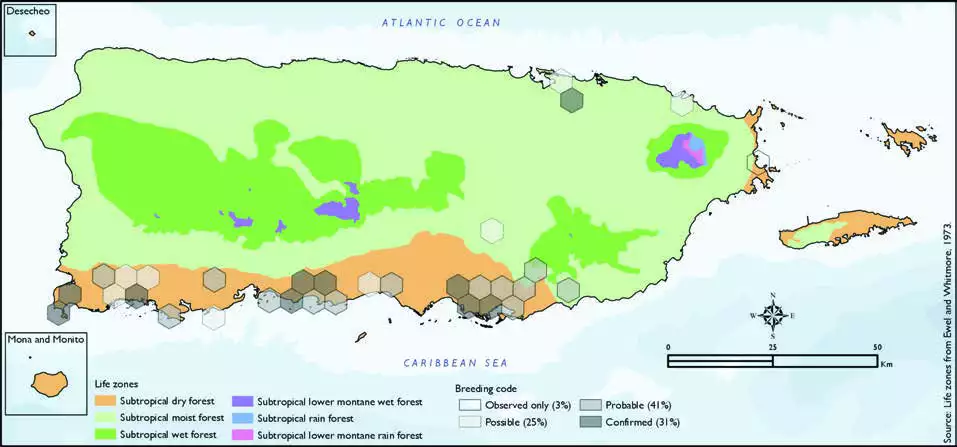Indian Silverbill
Description
The Indian silverbill or white-throated munia (Euodice malabarica) is a small passerine bird found in the Indian Subcontinent and adjoining regions that was formerly considered to include the closely related African silverbill (Euodice cantans). This estrildid finch is a common resident breeding bird in the drier regions of the Middle East and the Indian Subcontinent. It has also been introduced into many other parts of the world and has become established in some areas. They forage in small flocks in grassland and scrub habitats.
Distribution & Habitat
The Indian Silverbill is native to India, Sri Lanka, the Arabian
Peninsula, Pakistan, and Nepal
(Restall 1997). It is a popular
cage bird that has been
introduced into many countries
and is established as a breeding
nonnative species in Jamaica, the
Virgin Islands (St. Croix), and
Puerto Rico (Camacho Rodríguez
and others 1999, Raffaele and
others 1998). The species was
first recorded in Puerto Rico
in 1971 (Raffaele and Kepler
1992) and has been described
as locally common in the coastal
regions, particularly along the
southwestern coast, as well as
in the metropolitan area of San Juan, occurring locally west to
Dorado (Raffaele and others
1998). The species usually occurs
in scrub and bushy areas around
human habitation, and in Puerto
Rico it occurs in arid pastures
and gardens where grass is in
seed (Raffaele 1983). The atlas
fieldwork yielded a total of 42
records within 32 hexagons or 7
percent of the 479 total hexagons
(see map). Of the 32 hexagons
where this species was found,
breeding was confirmed in 31
percent (10) of the hexagons,
probable in 41 percent (13), and
possible in 25 percent (8), while
the species was observed in 3
percent (1) of the hexagons but
without evidence of breeding
(see map).Indian Silverbill distribution. The map shows the highest breeding code by hexagon and overlaying the ecological life zones in
Puerto Rico. Note: percentages may not total 100 due to rounding. 245Indian Silverbill/Gorrión Picoplata

Breeding Habits
The Indian Silverbill builds a domed grass nest with a side
entrance, usually in trees or
on window ledges (Raffaele
and others 1998). Previously
published reports indicate that
it breeds primarily from June
to November but also in other
months (Raffaele and others
1998). Atlas results indicate that
this species breeding season
extends throughout the year
with the most breeding activity
during June, although no data
were available for February (see
chart). Though breeding mostly
occurs in the subtropical dry forest life zone, results show that
some breeding activity occurs
in the subtropical moist forest
life zone during March and June
(see chart). Results show that
this species breeds mostly along
the southern coast within the
subtropical dry forest life zone
(81 percent of the hexagons)
(see map and table). It also
breeds within the subtropical
moist forest life zone in the
coastal plain (19 percent of the
hexagons) (see table and map).
Conservation
The global population size for the Indian Silverbill has not been assessed, but it is described as
common or locally common
(Clement 1999). This species
is currently listed as a species
of least concern by the IUCN
(BirdLife International 2016).
Locally, this species is not
listed in any of the threatened
categories of PRDNER and
USFWS. In Puerto Rico, the
Indian Silverbill has a protected
habitat in land of about 9 percent
or 65 km2 of the total area covered by the hexagons where
evidence of breeding was found
for this species (743 km2).
Related Species
Family:
finch